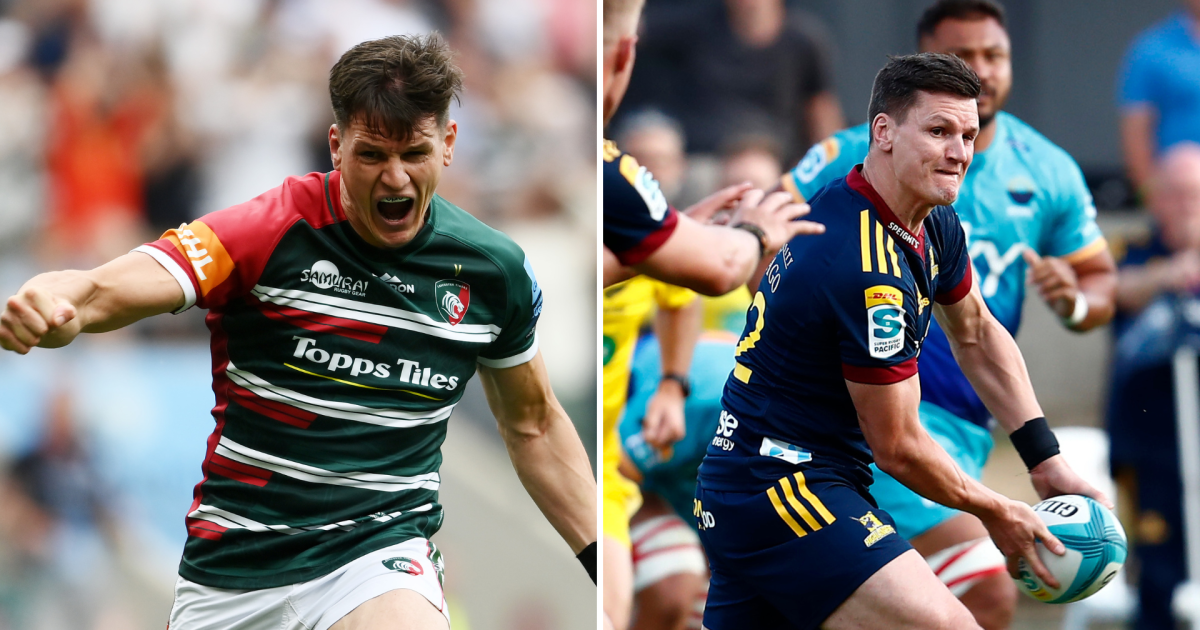'Definitely quicker': The difference between northern and southern hemisphere rugby

Former England flyhalf Freddie Burns etched his name into Gallagher Premiership history in June as he drop kicked the Leicester Tigers to a famous win in the dying stages of the final.
With the score locked up at 12-all against Owen Farrell’s Saracens, Leicester needed a hero and Burns answered the call.
After coming on as a replacement – George Ford had gone down with an injury – the star first-five ended a nine-year Premiership drought for the East Midlands club.
If he wasn’t already, the veteran of more than 110 appearances instantly became a club legend at Leicester.
But as the adage goes, all good things must come to an end.
Burns was left in tears ahead of his final match for the Tigers in January, after being granted a mid-season release to join the Highlanders.
As both a player and fan of rugby union, a move down south had always intrigued the 32-year-old – and now was his chance to make that dream a reality.
After leaving the Tigers, Burns made his Super Rugby Pacific debut less than a month later. While the match didn’t go to plan for the Landers, it was a special moment nonetheless.
While he only has 16 minutes of Super Rugby playing time to his name, Burns has already noticed some telling differences between northern and southern hemisphere rugby.
“It was very quick. I think the new law interpretations sort of lend its hand to that so it’s like you almost can’t take it for like for like or do too big of a comparison,” Burns told RugbyPass before flying to Melbourne.
“The ball in play time has gone up massively with the new laws… all that sort of stuff lends its hands to it being quite hard to compare.
“It’s definitely quicker, definitely more emphasis on moving the ball and creating one-on-ones rather than maybe the structured kicking game.
“The bit that probably stood out most for me was at 31-20, the Blues got a penalty and I think in England you’d take the three-points there to try and get to the 14-point mark, but they stuck it in the corner.
“It’s that relentless pursuit to score tries and really accumulate the scoreboard that way.
“I’m always learning, I learn every day here.”
The Highlanders began their season with a disappointing 60-20 loss to the Blues at Dunedin’s Forsyth Barr Stadium on Saturday.
But Burns has been around long enough to know that the scoreboard isn’t necessarily everything.
While he admitted that there are some key lessons to learn out of the loss, Burns insisted that there was “a lot of positives” to take out of that match, before facing the Crusaders in round two.
“That’s the excitement of it, we’re coming into his game off the back of a big loss,” he added. “Sometimes I think it’s the perfect tonic to get back on it.
“The main thing for us is we weren’t a million miles away against the Blues, and as much as the scoreboard… you have to look at rugby games as performances.
“When I was younger I got very caught up in the result, whereas now you look at the performance.
“There’s a lot of positives that we need to take into this Crusaders game… it’s a great challenge.
“To be sat here now about to board a flight to Melbourne to play the Crusaders is something I never thought I’d say in my career.
“For me personally and the team, I think there’s huge excitement to test yourself against the best again and just see where we’re at.”
All 12 Super Rugby Pacific teams will play at the same venue in round two, with Melbourne’s AAMI Park set to host Super Round.
The Highlanders’ match with the Crusaders will kick-off proceedings on Friday, with Burns set to start at first-five.





































































